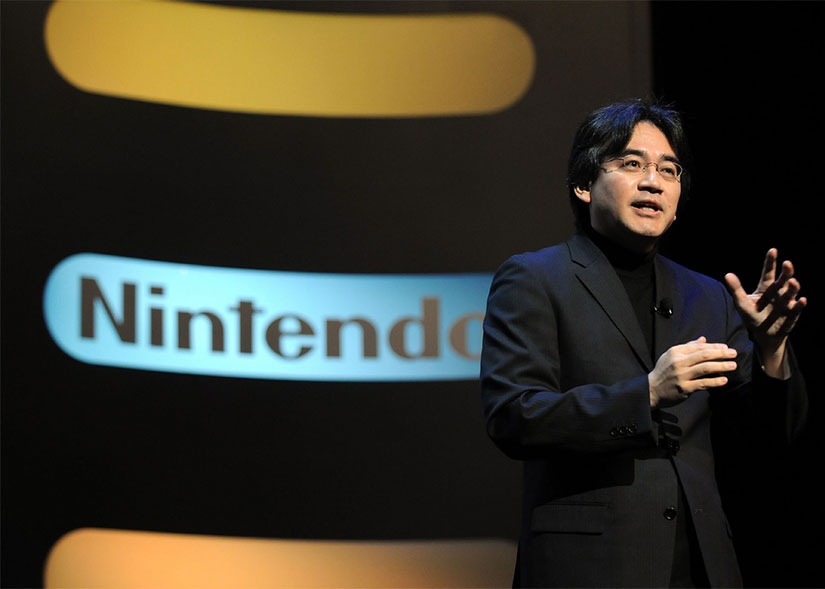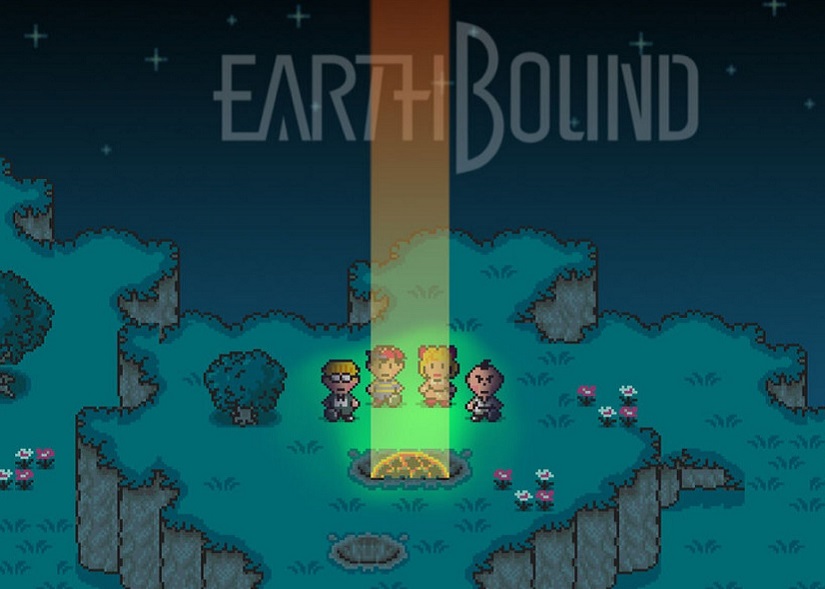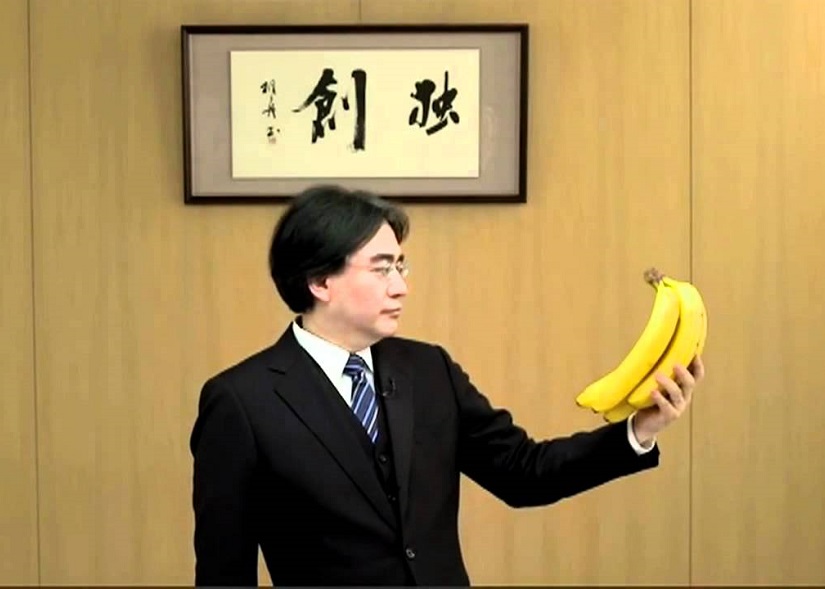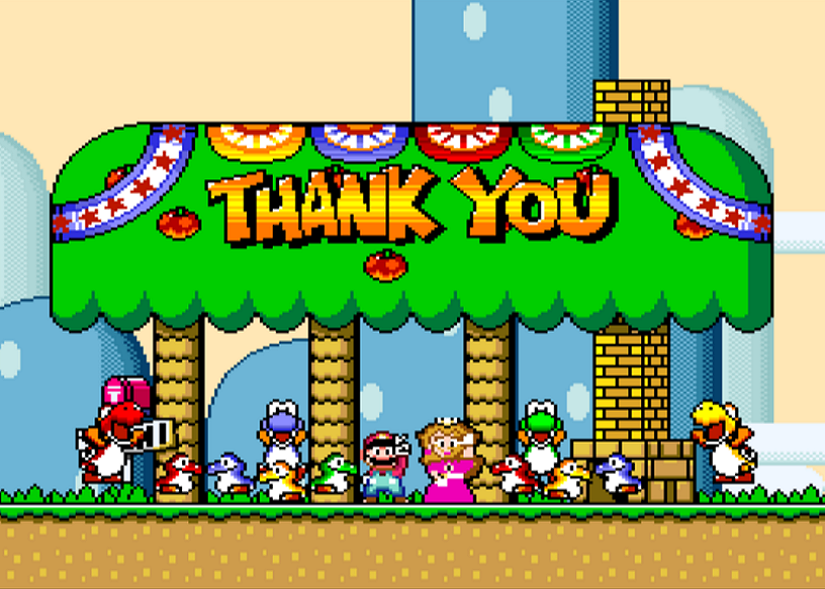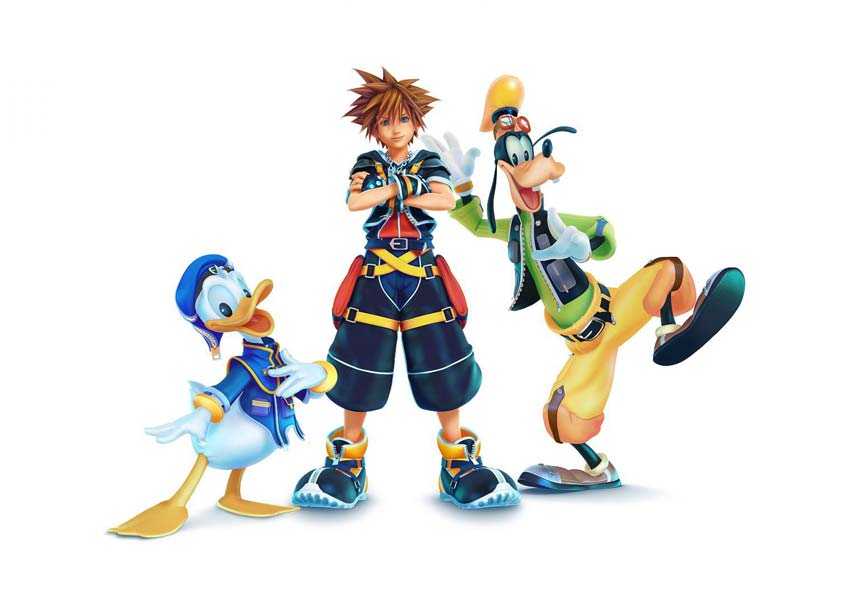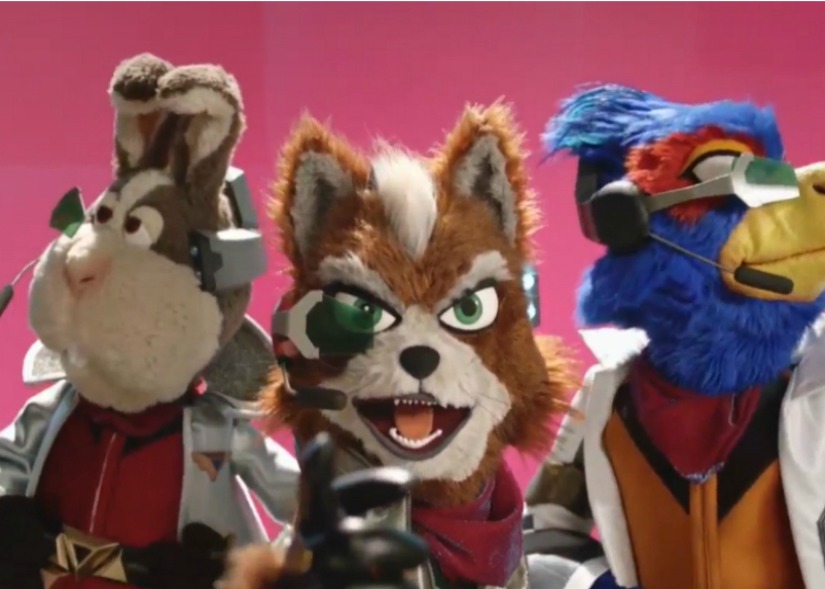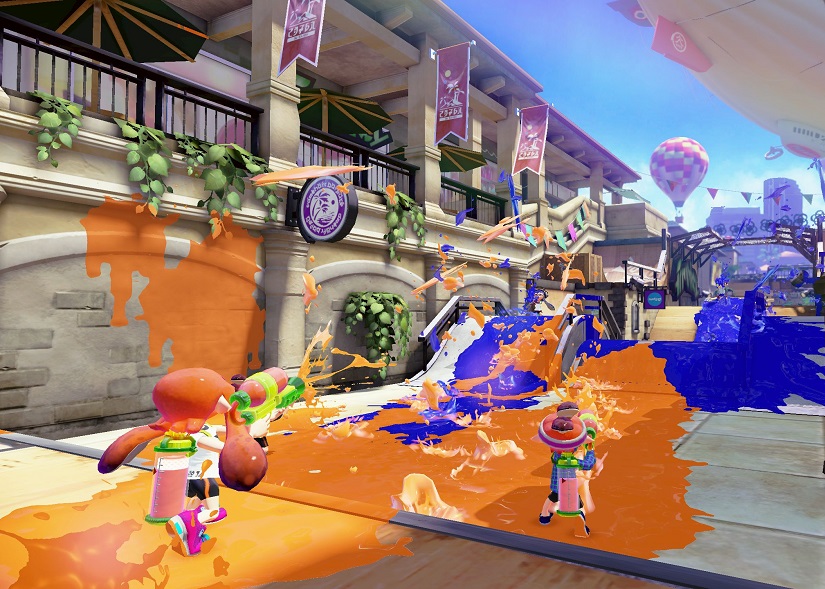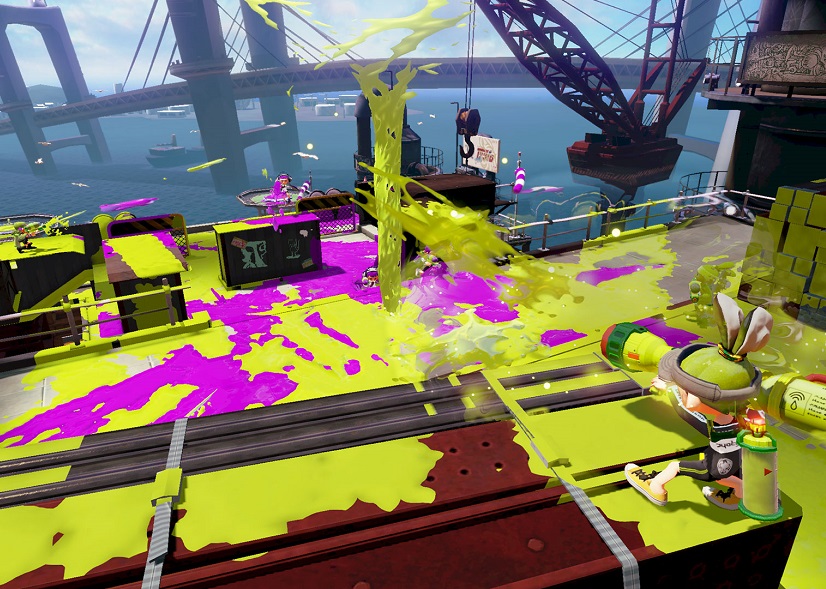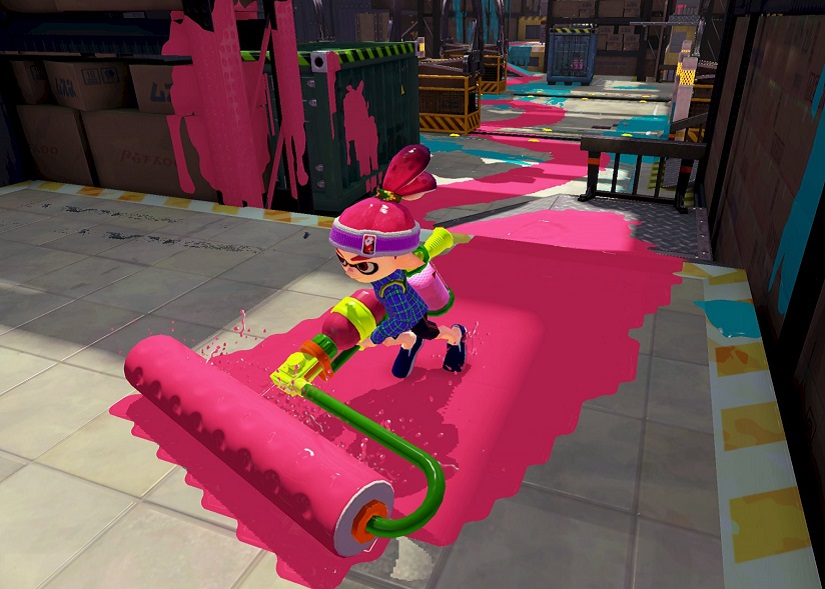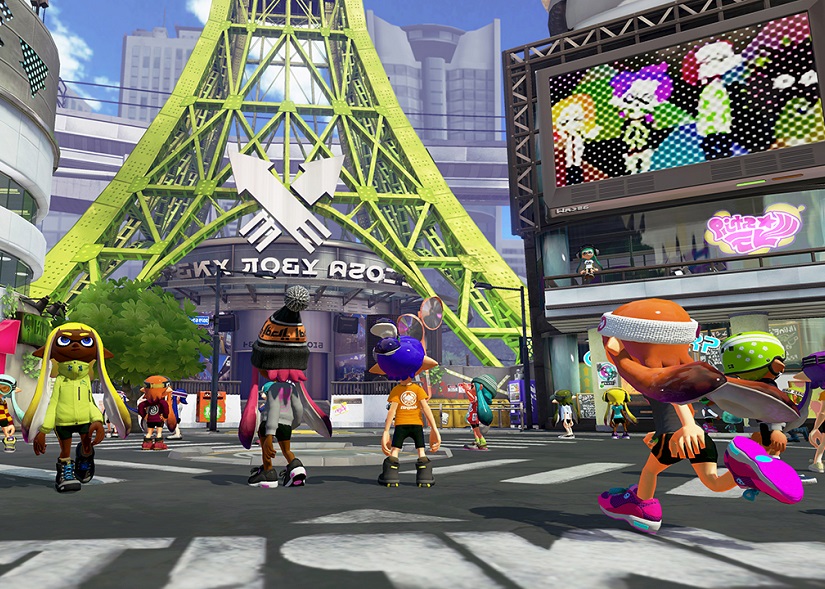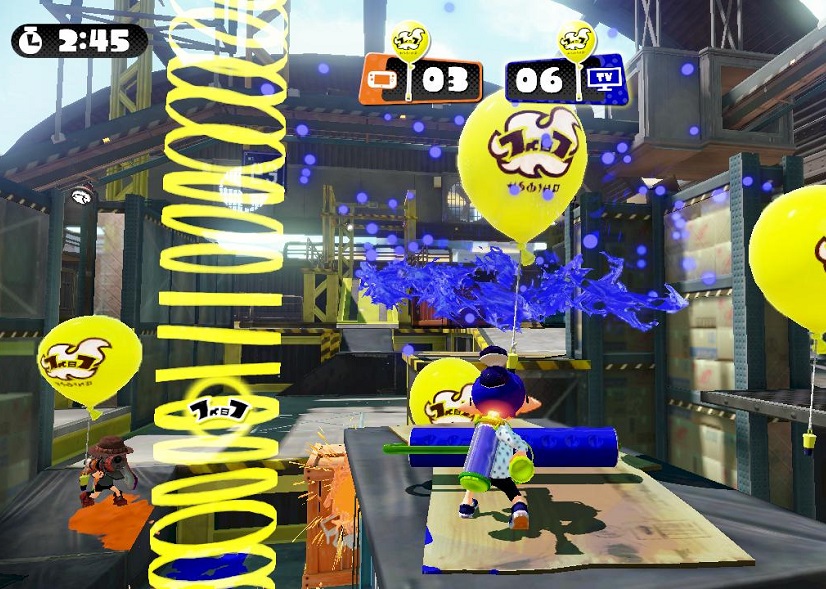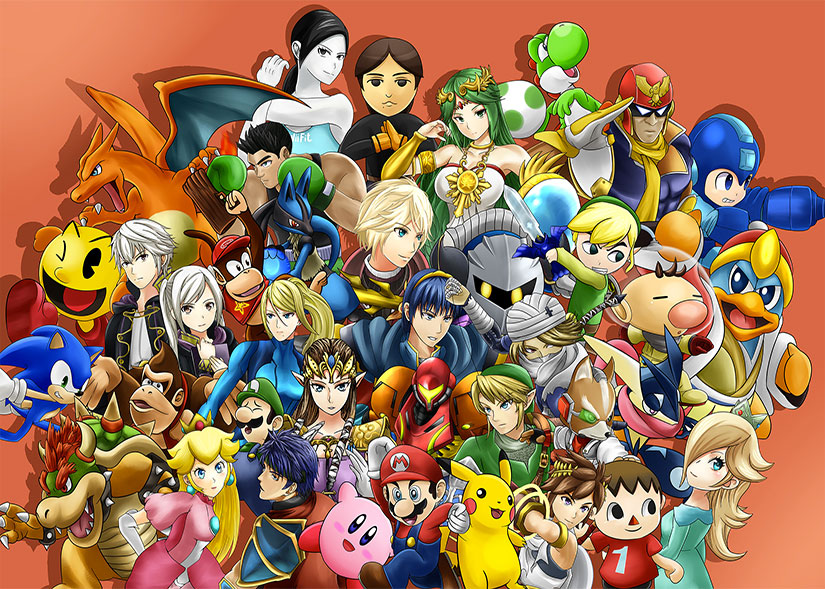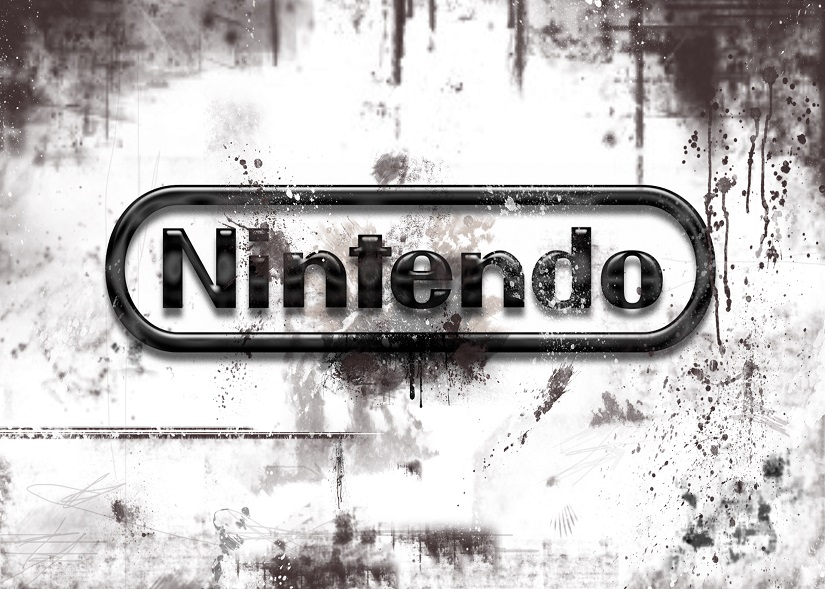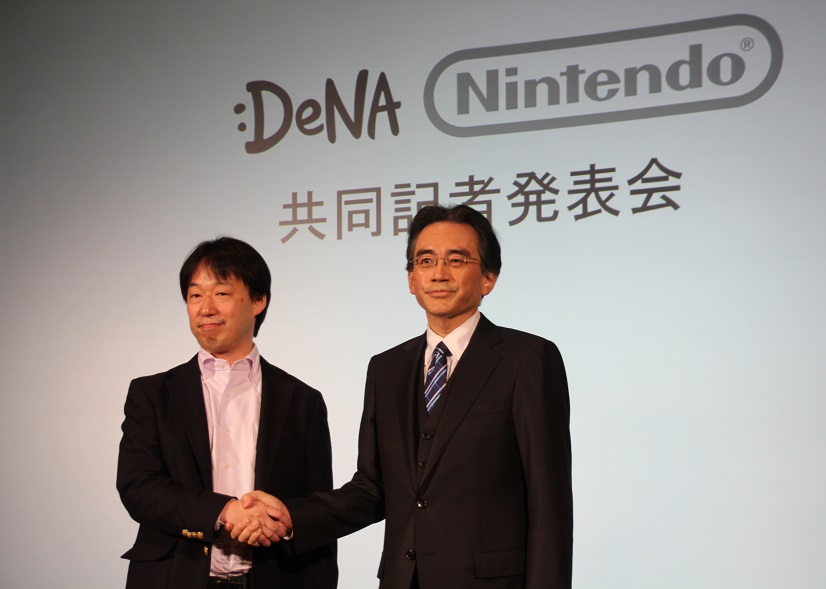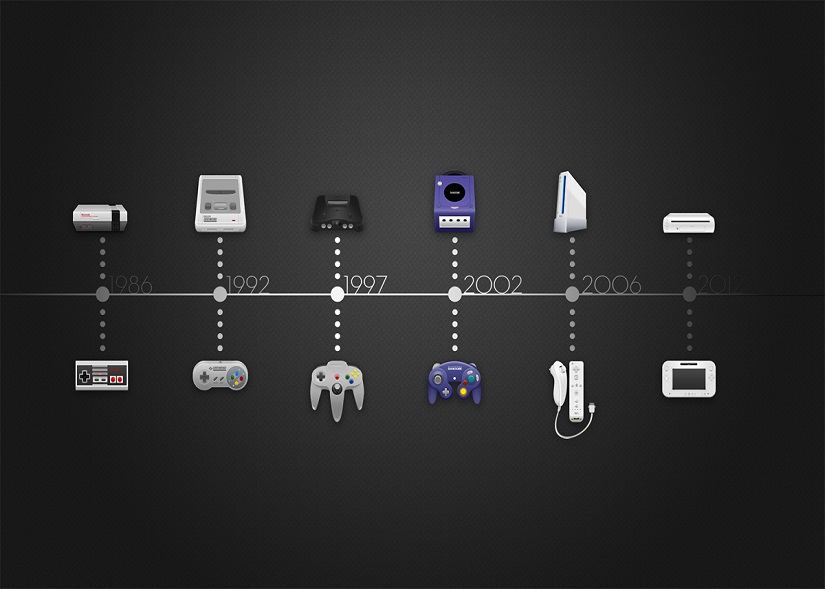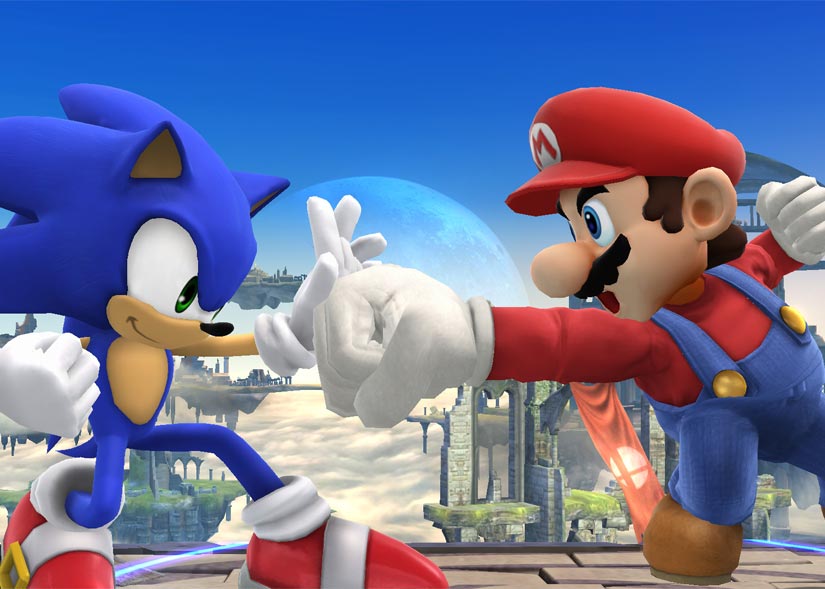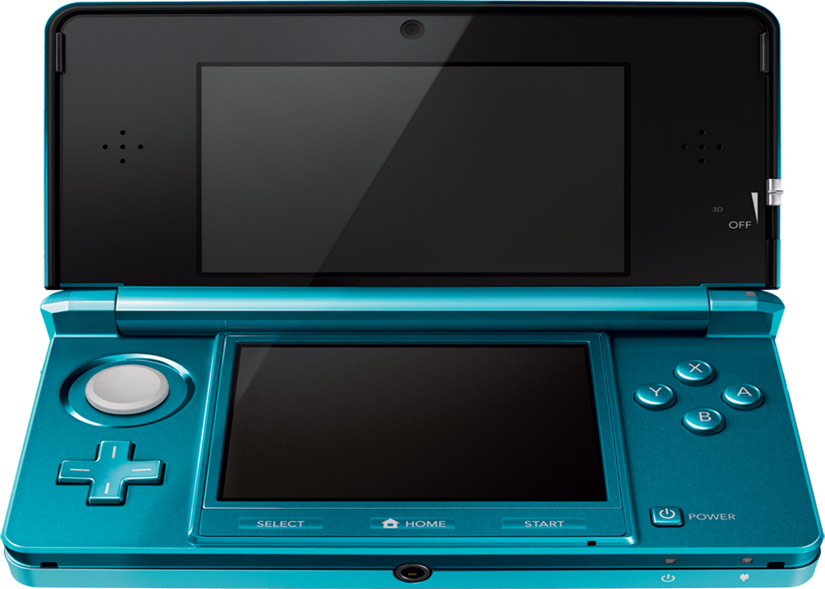Remembering Nintendo's Satoru Iwata, The CEO Who Made The World Smile
There can be few higher aspirations in life than bringing joy and happiness into the lives of others. Former Nintendo President, Satoru Iwata, who died yesterday aged 55, achieved this for millions of people around the globe. When we think of CEOs these days, we imagine soulless corporate suits crushing those lower down the ladder in pursuit of profit. Iwata could not have been further from that image. At a keynote speech in 2005, he famously stated that: "On my business card, I am a corporate president. In my mind, I am a game developer. But in my heart, I am a gamer."
Having stated his career as something of a prodigal talent in programming, working on such titles as Balloon Fight, Earthbound and various Kirby games, Iwata ascended the ranks at Nintendo to become the company's first President not descended from the Yamauchi bloodline. Where his predecessor, Hiroshi Yamauchi, was every bit the stoic, fiendishly brilliant businessman, Iwata transformed Nintendo into a company with a welcoming face that suited their line of games and characters which had been a staple of so many fondly-remembered childhoods.
Iwata never lost his passion for the video games medium and his achievements are spoke of in hushed tones throughout the industry. He coded the NES classic Earthbound all on his own. He debugged the entirety of Super Smash Bros Melee in three weeks to ensure the game hit its scheduled release date. He ported the battle system from the original Pokémon Game Boy games to Pokémon Stadium in a week without any help from design documentation. When Game Freak were struggling to contain the world they had created for Pokémon Gold and Silver into a single Game Boy cartridge, Iwata developed a compression technique so efficient that the developers were able to fit the entirety of the previous games' world in there as well. If Shigeru Miyamoto was the genius behind many of the company's most enduring mascots, Iwata was the technical master whose brilliance may have operated behind the curtain, but was no less impressive or important.
It was during his tenure as Nintendo President that Iwata truly began leaving an imprint on gamers' hearts and minds. He oversaw the creation of two of the world's most successful and innovative consoles, the Wii and the DS handheld. Both were dismissed at launch by competitors, yet went on to achieve groundbreaking global sales. For all they lacked in cutting edge hardware, both offered a diversity and whimsy in their games library that could not be found anywhere else. It was during this time that Iwata also began working to soften the company's image, offering an unprecedented level of openness and accessibility to its fans. In his Nintendo Direct online presentations, which he used periodically to announce updates on new games, he showed off a famously self-deprecating, meme-conscious sense of humour as the loveable half of a double act with Nintendo Of America's burly COO, Reggie Fils-Aimé. In his Iwata Asks interviews, he gave unprecedented insights into the thought processes of some of the world's most important game developers.
When the Wii's successor, the Wii U, struggled out of the gate, Iwata showed that his kindness was not limited to his public persona. Facing severe pressure from shareholders to lay off employees and embrace the cynical practices of free-to-play gaming which had become so prevalent and lucrative elsewhere, Iwata resolutely stuck to his guns, firmly believing in the importance of respecting and trusting the company's core fanbase. In 2014, he elected to cut his salary in half in order to avoid having to cut employee numbers as a consequence of poor financial results. This act of astonishing humility and, yes, understanding stood in stark contrast to the actions of other multinational CEOs at the time, who spent much of the financial crisis protecting themselves and their salaries at all costs.
Whether remembered making his signature 'direct' hand gesture, holding up a bunch of bananas, or in the puppet form so immediately embraced in last E3's Digital Presentation, Iwata personified all the qualities which made Nintendo so special to so many people around the world, never straying from his core belief that video games are meant to be fun for everyone. He oversaw one of the most creatively and financially successful periods in the company's history. Even with the recent downturn in fortunes with the struggles of the Wii U, he was in the process of modernising the company with moves into mobile gaming and toys-to-life, on course to right the ship without compromising its all-important central values. Most importantly, he was a man of singular nobility, talent and generosity, who was always loved and respected even by those who sometimes did not agree with his decisions. The outpouring of grief following his passing is testament to how deeply he was loved by those touched by his work and who felt welcome into the accepting, open-hearted Nintendo community he was instrumental in creating. Though his death leaves us with tears in our eyes, his legacy left smiles in our hearts.
Thank you, Iwata-san. You really were a Super Player.
R.I.P. Satoru Iwata, 1959 - 2015
Brace Yourselves, Kingdom Hearts III is Coming
[youtube id="a7BvViADiwQ"]
The wait is finally (almost) over. The renegade of the anime world, a Disney favorite and a (now) classic gaming series is closer than ever to revealing the third installment of the Kingdom Hearts franchise.
It’s been almost 15 years since the first release of Kingdom Hearts (2002) on Playstation 2 and 10 years since the sequel, Kingdom Hearts II (2005). While there have been remixes, remasters and small side stories available on handheld devices, the true third installment is right around the corner. The following games have all been small steps towards the upcoming release of the third game: Kingdom Hearts: Chain of Memories, Kingdom Hearts coded, Kingdom Hearts 258/2 Days, Kingdom Hearts: Birth By Sleep and Kingdom Hearts 3D: Dream Drop Distance. Most were considered to be flops, but the gems that stand out (Birth By Sleep, 3D: Dream Drop Distance, HD 1.5 + 2.5 Remix) have been quietly stalling the hunger of fans for the third game for quite some time.
It’s apparent the Japanese have an affinity for all things Kingdom Hearts as the Square Enix company holds KH, Final Fantasy, Hitman and Tomb Raider as their most coveted franchises. But, most importantly, the team at Square Enix are revving up their engines to bring audiences the best quality of the games they’ve grown to love over the years. With new and improved versions of the games we grew up with, Square Enix is taking the phrase, “If it ain’t broke, don’t fix it,” to a whole other level.
[youtube id="aQwlJzROy38"]
In addition to Disney characters and worlds, there are rumors that the team behind KH might take gamers into Marvel and Star Wars territory. With the third installation, the game will also be available for Xbox One, not just Playstation. According to the Square Enix conference this past week, the team is looking into sharing some exciting news about the game in November.
E3 2015: Highlights from Nintendo's Press Conference
After Microsoft and Sony's conferences both brought huge announcements, all eyes were looking toward Nintendo to see if they could match. While the overall conference was as fun as it was in years past thanks to Nintendo's increasingly weird digital events as this year brought puppets into the fold, it was an unfortunately light year. Light on huge announcements and only elaborating on video games we've heard about already, it felt a little lacking. We got some new footage of the newly titled Starfox Zero, and it looks great. Platinum Games has their work cut out for them as Starfox looks gorgeous, but ultimately seems to have all of the play style ideas (like different vehicle missions and such) from the canceled Star Fox 2. It's also got a stupid title. Miyamoto said he didn't wan't to number it or title it just "Starfox" since it's not a reboot or sequel, but zero is a number. Either way, the fact that the Wii U Gamepad gives a cockpit first person perspective is pretty neat.
Afterwards, Nintendo showed off a trailer for Fire Emblems Fates (the new two version game), some new Legend of Zelda games for the 3DS, a terrible looking Metroid spin-off, more amiibo stuff, and basically showed off extended trailers for games we knew existed.
[youtube id="s6PEecNY0Sc" autoplay="no"]
The biggest push for the show had to be for Super Mario Maker and Mario's 30th anniversary. There was nothing new here except the announcement of Nintendo's help for a charity, but that and Yoshi's Wooly World soaked up so much time. Don't get me wrong, I'll be happy to play these games whenever they release, but I look forward to E3 every year with the promise of new stuff to come. To hear about new Animal Crossing and Skylanders amiibo just rubs salt into the already wide amiibo wounds. There's no way I'd be able to buy these at launch thanks to Nintendo really messing up the stock domestically, and thanks to that, I'd never be able to find them ever. I feel for the poor kid who wants a Ness amiibo, or a new K.K. Slider amiibo, and can't get it because Nintendo's essentially only made one batch. amiibo used to be harmless fun, but as the newest Splatoon amiibo show, they're now a DLC delivery device that's actually holding back the progress of the games they are attached to.
Then again, there's a new Mario Tennis coming to Wii U so all is forgiven. Check out IGN for full Nintendo at E3 coverage!
[Review] Splatoon
The common refrain of Nintendo only making games for children may irritate fans no end, but as a statement, it is hard to argue with its accuracy. The suggestion, of course, is that no-one above a certain age would want to play their games, the patently ludicrous delusion of those still clinging to the juvenile approximation of violence with adulthood. Nintendo's games are delightful no matter how old you are, and the reason is because few other companies in the business of creating entertainment are as effortlessly capable of producing experiences which instantly recall the intense, anarchic joys of childhood.
More specifically, Nintendo remembers that such pleasures never had anything to do with the saccharine ideal often portrayed by the media through bland snapshots of toddlers laughing with their parents or playing calmy in an immaculately organised nursery. The joys of childhood were in the misbehaving, the chaos and wanton disobedience of making a mess and breaking rules you didn't even know existed. This rule-breaking has been key to Nintendo's design philosophy ever since players were encouraged to discover a warp zone in the original Mario Bros by running along the level roof. The company may have become increasingly conservative in recent years, pumping out annual Mario and Zelda titles to bolster its struggling hardware, but that core design doctrine, that mischief is always more fun than obedience, has remained, even if not quite as pronounced as it used to be.
That's where Splatoon comes in.
[youtube id="XHlgKMUePck"]
Splatoon
Developer: Nintendo
Console: Wii U
Release Date: May 29th, 2015
Shooters and territorial control games are often cited as two of the most 'hardcore' (cough) genres in gaming, demanding pinpoint precision and intricate mastery of an array of complex systems and controls. With Splatoon, Nintendo takes both genres and inverts them via a simple but inspired twist, whereby the goal is not to conquer the enemy but the arena, performed with a compact number of immediately accessible options with infinite variation. In Titanfall, EA attempted to make shooting games accessible to beginners by offering low-skilled AI opponents as cannon fodder to artificially inflate scores. Such a clunky and patronising solution ignored the real sources of the problem: unneccessarily complex controls, confusing gameplay mechanics, and intimidating levels of aggression, to name a few.
Nintendo solves it by turning the genres' most basic tenents on their heads. In Splatoon, the wisest tactical move is often to avoid the most heavily populated areas in favour of seeking out and reclaiming overlooked map real estate. As long as a player is able to navigate and hold the button to fire the ink whose coverage claims territory for their team and increases their personal score, they are able to make a positive contribution to the effort even if they don't see an opponent the entire match (as unlikely as that admittedly is). With a tap of the gamepad's touchscreen, you can at any point choose to jump to another location on the map provided an ally is nearby, providing an easy way out of sticky situations. Gunning down enemies with the game's impressively varied and well-balanced arsenal is not without benefits, though the most important is tactical, forcing a member of the four-strong opposing team out of action for a few seconds and giving your team a momentary but essential advantage during which game-winning pushes into enemy territory can be made.
Achieving significant ground coverage also aids navigation, with your player able to transform into a squid and swim at high speed through ink of his or her own team's colour, even up and over certain walls. Doing so robs you of all offensive capability, but adds a stealth element - using a well-placed ink trail to sneak up behind an enemy and splat them is a thrill discovered early and which never becomes any less gratifying - and a further tactical element to the gameplay, whereby choosing the moment to risk a charge down a precarious ink trail through enemy lines, using speed rather than power to survive, can lead to a potentially enormous advantage, especially with teammates able to immediately jump to your side should you make it.
For all that killing, or splatting, is de-emphasized, your choice of weapon can make a huge difference to your role in the game. Rapid-fire weapons offer little range or accuracy, but balance ground coverage with reasonable offensive power when pushing towards choke points. Rollers (literally giant paint rollers) can lay down a wide, continuous path of ink, essential for quick navigation and aggressive land-grabbing, but are immensely vulnerable to attack from above or at a distance. Chargers, the game's sniper rifles, are specialised high-power weapons with the greatest focus on taking out opponents, but can put together huge scores with thoughtful use. The many variations on these weapons offers a smorgasbord of in-between options for those whose skillset doesn't comfortably fit into one specific category. Overly efficient Aerospray aside, they all offset each other nicely.
In addition to your primary weapon are subs and specials. Subs are the equivalent of Call Of Duty's equipment, offering both explosive and tactical options. Specials are the game's version of killstreaks, unlocked once you have covered or reclaimed a certain amount of territory. These create some of the game's few balancing issues. While each has its purpose and can be an invaluable asset in the right hands, some subs and specials are noticeably more formidable than others: the Kraken, for instance, transforms the player into an invincible sea monster who can cut an ink trail through enemy territory and destroy all in its path. The Killer Wail sonic blast, with its cover-permeating range and wide radius, becomes insanely powerful in narrower maps.
None is game-breaking by any stretch, but Nintendo's solution, locking weapon sets to prevent players chopping and changing to the most devastating combinations, only serves to undermine the solid balance of the primary weapons by making certain sets inviable should the supporting options not be strong enough to compete. That lack of customisation is symbolic of what holds Splatoon back from making the most of the phenomenal gameplay experience at its core. Nintendo's refusal to give players the full range of options that should be a genre standard feels very much like unneccesary caution from a company with a young audience venturing on its own for the first time into a genre traditionally reserved for more advanced players. Having to quit out of online lobbies to adjust your load-out is a ridiculous frustration, especially for such a tactical game, when most online shooters allow you to not only change in-between matches, but often during them as well.
The number of clothing options available from the Inkopolis hub in which to kit out your avatars is also undermined by the associated perks being entirely randomised bar one. This is, again, presumably to prevent players stacking themselves with a small number of powerful options, but a more balanced set would prevent that more naturally. It instead encourages players to choose aesthetic options they may not like in order to take advantage of the boosts they provide. It ceases to be about players expressing themselves and more a slightly grating push to engage in a system of cynical capitalism encouraging results and function over creativity and self-representation. Achieving a high enough level allows you to re-roll your perks, but it's a costly option that continues to put players at the mercy of a random draw.
Online multiplayer is the game's overwhelming focus and runs smoothly despite suffering the occasional connection failure which also blighted Mario Kart in its post-launch months. Fair warning, there have also been reports of a small number of players struggling to connect at all. Offline, the single player mode is short and sweet, barely five hours in length and, outside the endearingly barmy boss fights, feels more like an extended training mode than campaign in and of itself. Nevertheless, it offers impressive variety in visuals and design, combining the look and obstacle course structure of Super Mario Galaxy 2 with the spraying mechanic from Super Mario Sunshine. There's little incentive to replay levels once they've been completed, but collecting the secret scrolls hidden in each reveals an enjoyably silly and surprisingly detailed lore underpinning the game's squids vs octopodes conceit.
It's a shame there isn't an arena mode to battle AI opponents in the multiplayer maps, and the local multiplayer option, while frantic enough on the smaller maps, is so stripped down (involving popping balloons rather than territory coverage, for whatever reason) that its appeal is likely to be decidedly short-term. Restricting player numbers to two is another annoyance, especially when trawling the bigger maps becomes a drag which could have been at least partially alleviated by allowing four players to enter the fray in 2v2 competition. The local multiplayer control options are also incomprehensively narrow and counter-intuitive: the player using the gamepad can only play on the tiny gamepad screen, giving the player using a Pro or Classic controller the entire TV to themselves. The lack of a splitscreen option reeks of Nintendo trying to force usage of the gamepad's features in a way that also permeates the rest of the game. Outside local multiplayer, the gamepad is the only available control option, despite none of touchscreen features requiring functions that the Wii U's Call Of Duty titles haven't already handled quite ably for non gamepad-users by allowing players to toggle transparent on-screen maps. The inability to use the Wii remote/nunchuck combo is especially jarring given what a natural fit pointer aiming would seem to be for Splatoon's rapid-fire gameplay.
If the absence of control choices and customisation is an annoying but hardly overwhelming issue, the dearth of options even in the game's online multiplayer is far more difficult to overlook. While the limited single player and local multiplayer are forgiveable and the novelty of the bold gameplay is enough to keep things fresh (to use the game's own 90s-inflected lingo) for hour after hour of play, launching with only five maps and a single mode - with one more of each unlocking tonight - in the headline online multiplayer is entirely unacceptable. That custom matches with friends reportedly won't be unlocked until August only makes the situation all the more ridiculous.
The staggered roll-out of maps and modes in free DLC can be interpreted as Nintendo giving players time to get used to the specific demands of the game, or less optimistically as a cynical bid to make players hold onto it and reduce the second-hand market. With upcoming multiplayer maps already existing in the single player mode - levels 08 and 20, if you're after a sneak-peek - it taints what is otherwise one of Nintendo's most exciting and innovative releases in years. While the game's budget price in Europe makes it worth the plunge regardless of those early shortfalls, recommending it at the full $60 price to American buyers is considerably more difficult, at least until the full complement of 14 maps has been released in a few months' time - at which point, the game might well be cheaper anyway. Splatoon is a game that demonstrates all the subversive, groundbreaking glee that marks out the very greatest of Nintendo's work. Now they just need to finish it.
Nintendo Attractions to Appear at Universal Theme Parks
Nintendo is notorious for not sharing their IP efficiently and responsibly. Sure, there have been attempts over the years to expand their properties beyond video games, but each venture has been questionable at best (re: the John Leguizamo and Bob Hoskins-led Super Mario Bros. film, 1989's disastrous The Legend of Zelda cartoon (and CD-i games), The Super Mario Bros. Super Show! cartoon, to name a few). However, after years of stubbornness and not wanting to share their toys, Nintendo has relented a bit in order to find new streams of revenue to the one-time all-powerful video game company with their expansion into mobile devices, the success of Amiibos, and now, the expansion into an immersive, real world theme park.
Today, Nintendo and Universal Parks & Resorts announced their partnership "to bring the world of Nintendo to life at Universal theme parks – creating spectacular, dedicated experiences based on Nintendo’s wildly popular games, characters and worlds." Universal Parks & Resorts (sometimes known as Universal Studios Theme Parks or Universal Theme Parks) have had major success recently with licensed attractions, with The Wizarding World of Harry Potter and The Simpsons-themed Springfield being the most recent success stories.
There's no information as to which Universal Theme Parks will receive Nintendo attractions or whether the partnership will result in simply a ride or a fully-themed area like the aforementioned Harry Potter and The Simpsons attractions. However, both Nintendo and Universal are committed to creating a wholly-immersive experience unlike any other. Here's hoping they create a dedicated Pokemon area, complete with catchable Pokemon.
[Business Wire via Destructoid]
How Mobile Gaming Could Save Nintendo's Next Console
Nintendo confirmed at a press conference this week that their next console, codenamed the 'NX', was on the way, with more details set to be revealed in 2016. That the company is working on the Wii U's successor is hardly a surprise, having been hinted at much several times over, though the fact this news attracted so much attention despite only being revealed as a way of quashing any speculation of Nintendo quitting the dedicated hardware market - having been announced at the same time as the company's plan to licence its characters out for mobile game development - shows how important a place the company occupies in gaming culture even with the abject failure of their most recent home console.
The Wii U has yet to cross the 10 million global sales mark, having been available to buy since Christmas 2012. By contrast, the company's previous low watermark for home console sales, the GameCube, sold 22 million units between 2001 and its discontinuation in 2007, while the Xbox One and Playstation 4 have already outsold the U despite launching a year later. Sales of the 3DS have been more stable, shifting a creditable 50m units as of December last year. This pales in comparison to its predecessor, the DS, however, which sold just over 150m across its lifespan and is the top-selling handheld of all time.
The news of Nintendo finally, some would say inevitably, caving into the pressure to move into the mobile arena sent the price of their stock soaring by 29%, yet this represents something of a dilemma for its traditional audience. If the company's mobile ventures prove successful, as seems likely to be the case - their partners, DeNA, are hugely experienced and successful in the mobile gaming field, while Nintendo's catalogue of mascots have the kind of global recognition and appreciation which should guarantee a high level of trust and curiosity out of the gate -and they continue to struggle to assert themselves in a dedicate games hardware market where Sony and Microsoft are seen as more contemporary and exciting options by most so-called 'core' gamers, what reason is there for Nintendo to continue resisting the urge to dedicate most or all of its resources to mobile game development?
The fact is that, regardless of its recent difficulties, the gaming hardware market would be a very different and less exciting place without Nintendo. After the video game crash in 1983, the company almost single-handedly revived the market with the Nintendo Entertainment System with a business model which, through licencing, guaranteed customers a certain level of build quality in their games. Its successor, the SNES, solidified Nintendo's place as the dominant force in the market, despite growing competition from SEGA. Their next console, the N64, would lose considerable ground to Sony's newcomer, the PlayStation, yet despite sticking with outdated cartridge technology, the controller's use of an analogue stick revolutionised the way games controlled in a three-dimensional space. The Gamecube saw Nintendo's stock fall yet further, with Microsoft entering the market with the original XBox, but the system's Wavebird controller revision was the first to offer a wireless connection to its console.
Little was expected of Nintendo's follow-up system, yet the Wii's unusual name and innovative yet simple motion controller caught the public imagination and quickly became a bonefide phenomenon. Unfortunately, the console's unreliable motion-sensing technology, combined with outdated hardware (offering only standard definition output against the XBox 360 and PS3's HD) and a combination of third parties flooding the market with low-quality games to get in on the rush while Nintendo struggling to fill gaps in their release schedule, meant the brand quickly soured for much of the company's long-term fanbase.
This led to the Wii U, a console mired in confusion and compromise from its unveiling, at once offering more traditional controls to appease disgruntled fans while continuing to confusingly utilise the Wii name, require a bafflingly large number of controller types (gamepad, wii remode, classic controller, etc) and centre around a touchscreen which was often inconvenient to use and has offered little in gameplay terms beyond an always-on map or inventory screen, plus the limited appeal of being able to continue to play even while not using the television.
The PS4's outstanding sales, undeterred even by a widely acknowledged dearth of worthwhile games in its catalogue, shows how important strong marketing is to a console's success. Despite its past innovations and the consistently high quality of its games, Nintendo is perceived by much of the gaming market as staid, childish and outdated, heavily reliant on gimmicks where Sony and Microsoft have pushed state-of-the-art (for consoles, anyway) technology and online infrastructure. They are seen to have little to offer anyone without an existing appreciation for a small number of popular franchises, a number increasingly limited to spin-offs of the Mario and Zelda games. Major third-party series such as Call Of Duty, FIFA and Assassin's Creed have all floundered on the Wii U, with recent iterations missing from the console altogether. The Grand Theft Auto series, meanwhile, has never graced a Nintendo home console.
If Nintendo are to succeed, it would seem they need to stumble upon another zeitgeist-defining innovation in the same vein as the Wii's motion controls while simultaneously offering a level of technological power at least in the same ballpark as its competitors. That need to find the next big innovation is itself somewhat problematic, though, not least because of the unlikelihood of even a company as inventive as Nintendo making the proverbial lightning strike twice, but also because the company's current association with gimmickery means offering anything but a standard dual-analogue controller is likely to be greeted with immediate suspicion.
Seth Rogen, Evan Goldberg directing Sega vs. Nintendo film
Growing up as a gamer during the '90s meant the Sega Genesis and Nintendo/Super Nintendo were my first introductions to video games. With the NES as my very first console, I wanted a Super Nintendo for Christmas one year. As fate would have it, Santa delivered not a gray-colored box, but a sleek, sexy black one: the Sega Genesis. Since then, my best friend Sonic the Hedgehog and I have sped through the next few generations of gaming, where I ultimately took my talents to Sony's PlayStation offerings. The rest, as they say, is history.
The '90s gaming scene was cutthroat, with Sega and Nintendo at the forefront of the so-called "console wars." As the infamous Sega ad read, "Genesis does what Nintendon't," which encapsulates what the entire first round of console wars was like, with Sega threatening to overtake Nintendo from their spot atop the gaming industry. Author Blake Harris will be publishing a book this summer focusing on Sega and Nintendo's rivalry entitled Console Wars: Sega, Nintendo, and the Battle that Defined a Generation.
Interestingly enough, the project has been greenlit for a film adaptation directed and written by none other than Seth Rogen and Evan Goldberg (This is the End, Superbad). The direction of the film will be entirely in the duo's hands, so expect some type of comedic tone to it. It'd be interesting to see who they get for the film, and exactly how the rivalry will be depicted. As long as Sonic is represented in the best light, that's all that I care about.
[via /Film]
Nintendo forced to pay percentage of future 3DS sales to another company
Nintendo fits into weirdly into the video game spectrum. On the one hand, their first-party titles (Zelda, Super Mario Bros., etc.) perform critically well to solid sales; on the other, the dwindling third-party support hasn't helped bring the company's latest console, Wii U, to the forefront of next generation gaming as the Xbox One and PlayStation 4. However, while the Wii U continues to underperform and underwhelm, the company's hardware side has been consistently salvaged thanks to amazing sales of the Nintendo 3DS.
As of October 2013, close to 35 million units have been shipped worldwide with no real signs of slowing down. Unfortunately, a percentage of future 3DS sales will go towards another company thanks to a patent claim. Kotaku states that Tomita's patented camera technology that creates 3D images from the system's cameras. Nintendo will be forced to pay 1.82% of every unit sold to Tomita going forward. It's a small percentage, but considering the current MSRP for the 3DS is at $190 and the growth of future 3DS sales, that price will add up.
[via Kotaku]

